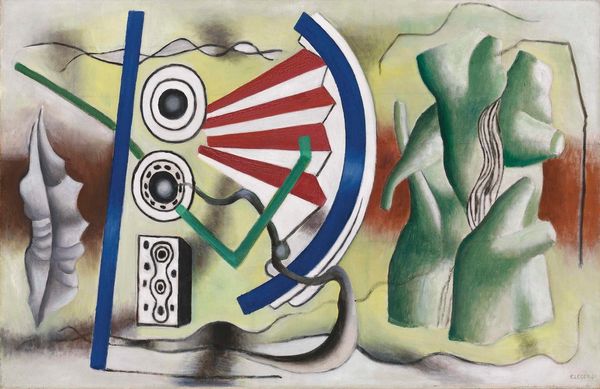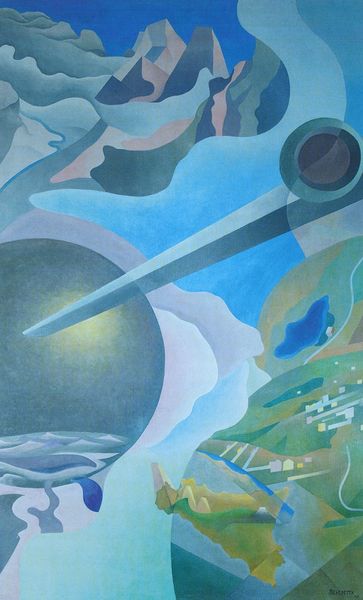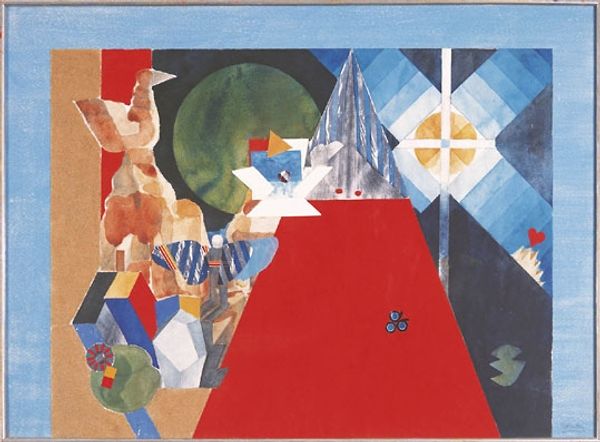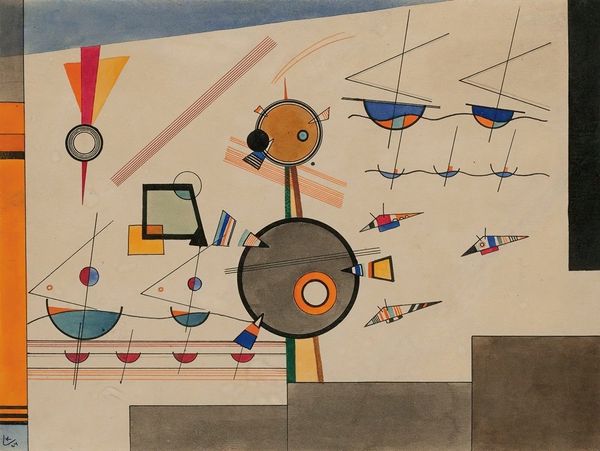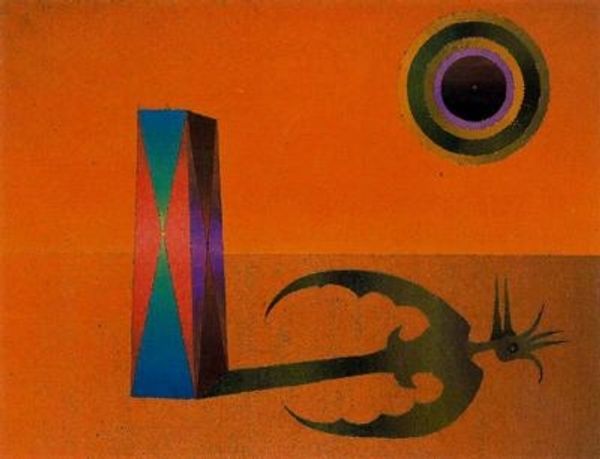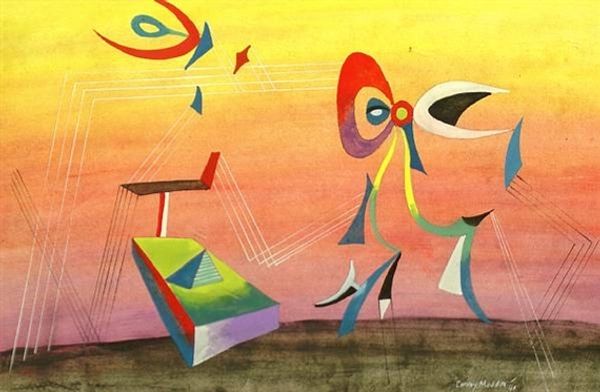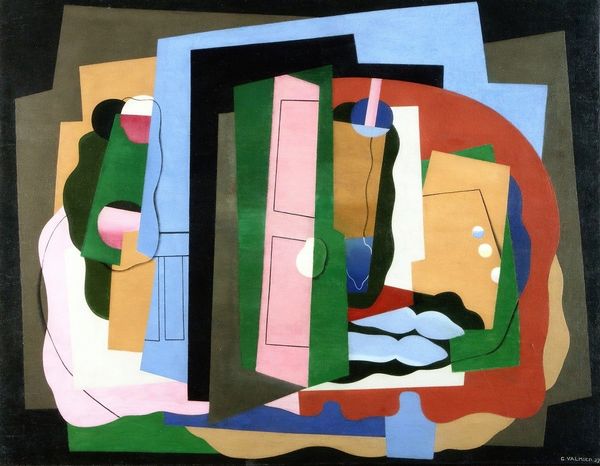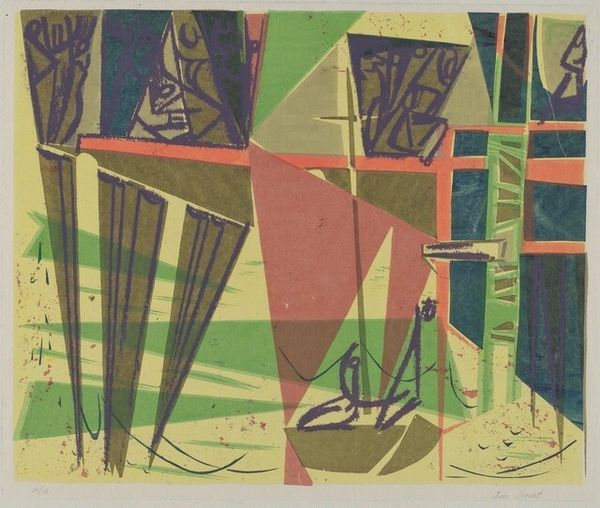
mixed-media, painting
#
mixed-media
#
painting
#
form
#
abstraction
#
surrealism
Copyright: Public domain
Curator: This is "Obraz," a 1932 mixed-media painting by Jindrich Styrsky. It exemplifies his engagement with surrealism. Editor: It feels strangely serene despite its abstract nature—a pastel dreamscape interrupted by what seem to be fragments of reality. There's a fragmented Greco-Roman figure in the top left... the materials create an illusion of rough stone. Curator: Exactly. Styrsky used paint and other mixed media to construct this composition, creating varied textures. His layering technique hints at a process of assemblage and deconstruction, mirroring the social and political turmoil of the time. How do the materials convey or undermine meaning? It's a balancing act of making and unmaking. Editor: The juxtaposition of the soft background with the rigid geometric shapes draws me to ponder the political landscape of the early 1930s—this was an era defined by a stark tension between emerging modernity and a lingering attachment to classical ideals. The classical sculpture's disintegration may be symbolic. Curator: The disjunctions invite interpretations along precisely those lines. I wonder how this relates to Surrealist theory that aimed to challenge conventional assumptions through the combination of the rational and irrational, the conscious and the unconscious. The means become very important: what type of paint, from what sources, was it manufactured for? Where do those materials fit into consumer culture? Editor: That prompts us to investigate beyond pure formalism, as such artistic ventures have socio-political intentions deeply enmeshed within them. It certainly underscores that the artist consciously intended the deconstruction of ideals, reflecting on a world gripped by anxieties around identity and societal values. Curator: Indeed. The fragmented statue combined with the basic geometric figures forces one to ponder how abstraction allows the materials and forms themselves to represent something far greater. This method is not mere detachment; it can serve as an activist lens. Editor: I’m particularly moved by the tension of destruction and rebuilding—themes which still resonate profoundly. Curator: Agreed, it certainly speaks volumes, and continues to encourage new considerations across contexts of medium, labor, and society.
Comments
No comments
Be the first to comment and join the conversation on the ultimate creative platform.


